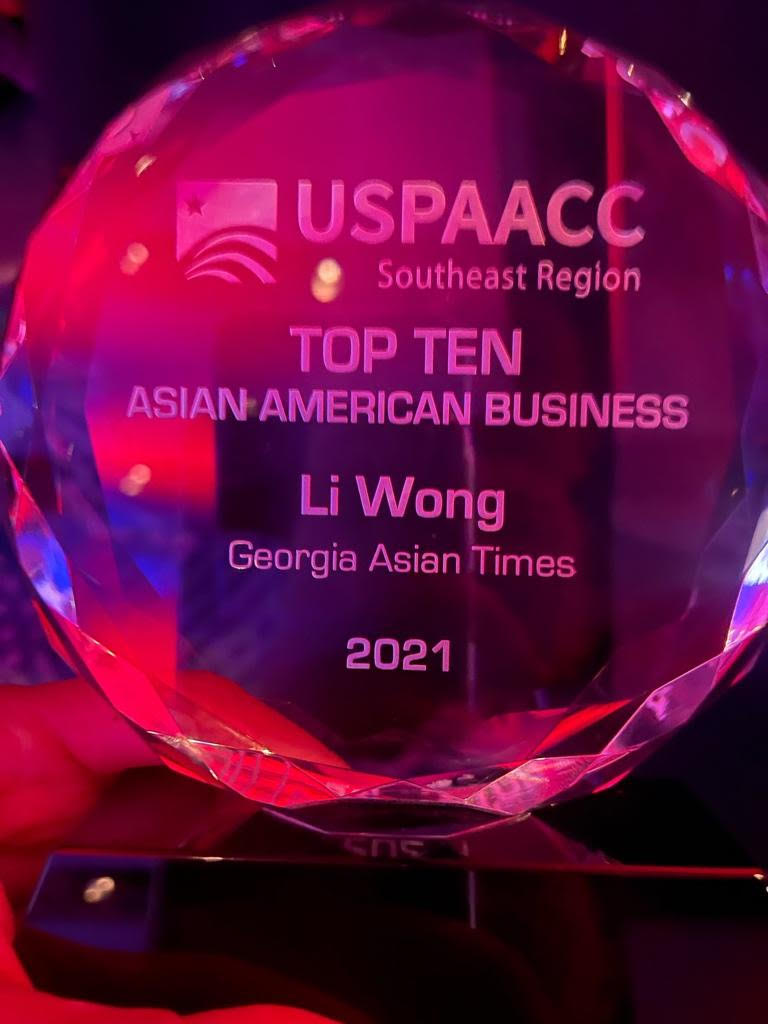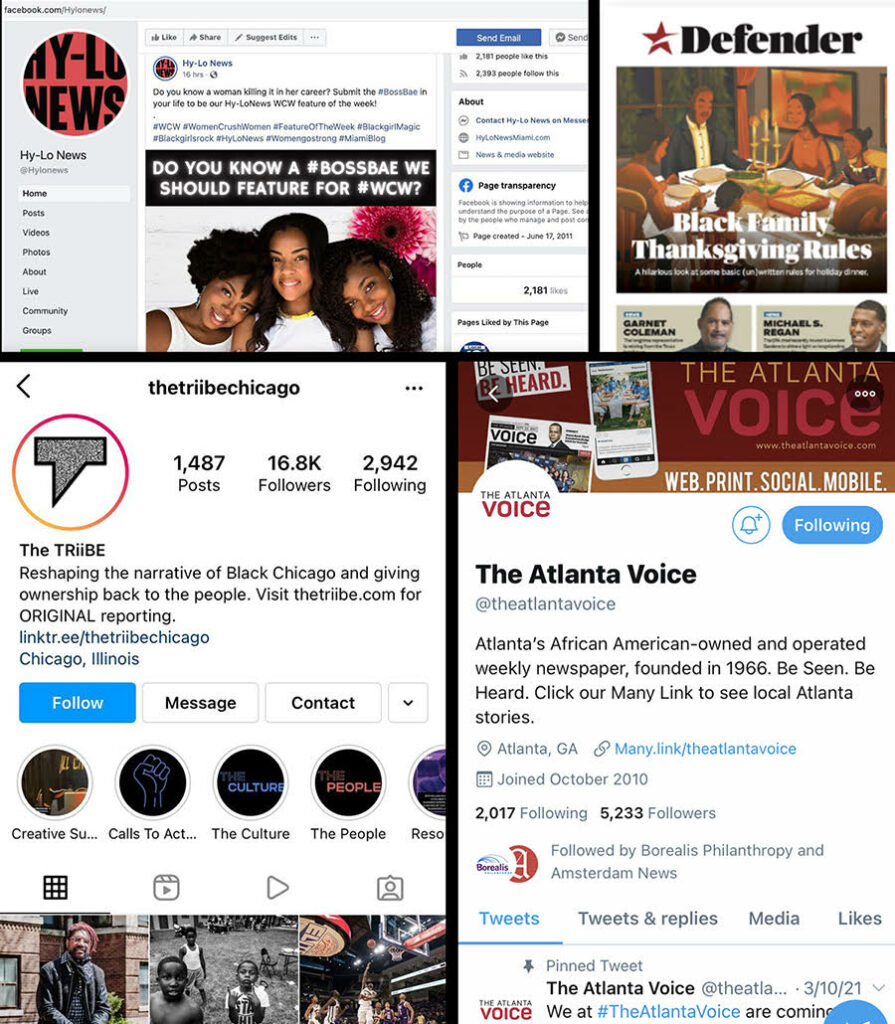It’s been a busy year y’all.
[pause.]
[pause.]
[pause.]
I just wanted you to hold the enormity of all that’s happened this year, all that’s changed in the world, all the work we’ve done, all the ways we’ve grown personally, professionally, and otherwise. It’s worth at least three pauses and honestly, probably more.
Because my birthday is in February, I’m able to take stock of the beginning of the year and set some curiosity or intention around my birthday. One year, I decided to focus on aesthetics and I spent a lot of that year noticing the opportunities we have to make transformation and changemaking juicy enough that it pulls a variety of people in.
This year, I began asking myself questions like:
If you could imagine anything for yourself, at a grand scale and scaled down moment to moment:
- What does your life look like?
- What does your world look like?
- How do you begin to re-imagine what you curated/are curating for yourself?
I’m still sitting with these questions. They’ve been guiding so many of my decisions this year, including the one of helping steward the REJ Fund. And I’m wondering what our media ecosystems, journalisms, organizations, movements look like when we hold those questions in those spaces as well. As we continue to dream and vision towards those things, I’m so excited for what we’re learning along the way.
In community,
Alicia Bell
Director, Racial Equity in Journalism Fund
Borealis Philanthropy
What We’re Learning
For December’s newsletter, we are spotlighting our grantee partners who produce content for Black millennials. Our goal is to highlight how they are operating, what strategies they are using to produce content and reach audiences, and the role social media plays in their reporting and outreach.
What we found from talking to startup publications Chicago’s The Triibe and South Florida’s Hy-Lo News:
1. These outlets want to re-think the notion of traditional journalism, much of which has been socialized and enculturated by a predominately white media landscape, and are exploring what it means to be objective. They are focusing on their audience and how to engage them in new ways.
2. Social media is a double edged sword. While they have been deftly able to utilize social media to successfully get out content and drive traffic to their website, the reliance on Meta Platforms Inc. (Facebook and Instagram) can be problematic when algorithms change or site outages occur.
What we found from talking to legacy publications The Houston Defender and The Atlanta Voice as well as Word in Black, a new collaboration of legacy publications:
1. Legacy outlets are currently working on expanding their audience by creating content specifically for millennials and by digitizing their content.
Other key findings:
1. The Triibe, Hy-Lo News, and the Houston Defender are doing in-person outreach to build community and are extending their reach beyond the screen.
2. The Triibe and Hy-Lo News would like more opportunities to network with other journalists and outlets so they can learn from each other and collaborate. The Houston Defender and the Atlanta Voice, via Word in Black, are collaborating with eight other legacy publications.
3. They are venturing into video. While producing video content can be challenging, they are recognizing that video is what younger audiences are consuming.
Re-thinking Traditional Journalism
Both founders of The Triibe and Hy-Lo launched their publications because they wanted to see Black stories covered in a different, innovative, and more community-oriented way.
Janey Tate of Hy-Lo News came from a traditional journalism background, working as a beat reporter for a mainstream paper. She was shocked to discover that even as a Black journalist, fellow Black people in the community still did not trust her. As she tried to interview them for stories, she would hear, “I don’t trust the news,” and “You only come around here when there’s something bad happening.”
These experiences made her realize that there was a deep mistrust of the media by many people in her community and that there was a strong need for “a safe place to report the Black experience, to tell Black stories, and to serve Black audiences.”
Morgan Johnson of The Triibe also felt that Black audiences weren’t being served equitably. She witnessed the negative impact that murder tally journalism was having in the Chicago area and wanted to come up with an alternative way to help solve gun violence. Johnson was trained in documentary filmmaking, which she explains is “very focused on audience engagement and impact.”
This also led her to question existing journalism standards. “Whose gaze are we writing for? Does objective journalism exist?” She goes on to say, “The TRiiBE was a part of a wave of academics and thought-leaders who said, ‘We have to be more intentional about the way that we frame stories and the world and labels that we project upon vulnerable populations.’”
Morgan wants to see more interaction and a call to action. “We want to report in a way that moves people to act on solutions to the challenges our communities face, to be civically engaged.”
Digitizing to Reach Millennial Audiences
Reframing news stories to serve Black audiences isn’t the only goal of Hy-Lo and The Triibe. Hy-Lo News is specifically targeting Black and brown millennial audiences in South Florida. The Triibe is reaching out to Black millenials in Chicago, but also anyone who is interested in their mission of Black liberation.
Despite the fact that there is a strong tradition of Black legacy news outlets which have been covering news and issues in Black communities from a Black perspective, both Hy-Lo and The Triibe did not feel that their needs were being served by these publications due to age.
Tate is a reader of the Miami Times, her local Black legacy publication, but points out that the tone of the paper “feels old and stiff,” something that would turn off fellow millennials. She makes a conscious effort at Hy-Lo to use slang and write in a way that millennials can relate to.
The need to reach younger audiences is an issue of which legacy publications such as the Houston Defender are keenly aware. People under the age of 44 make up only 25% of its readers — a percentage the Houston Defender is actively working on to increase. The Atlanta Voice has a higher percentage of readers under the age of 34 (41%) and has been actively working to appeal to younger audiences as well.
Based on focus group findings, the Houston Defender is creating content specifically for millennials on the following topics: Health, Wealth, Career, Relationships, and Lifestyle. The Atlanta Voice recruited younger staff members for their newsroom. As James Washington, president and general manager explains, “Our product line is more reflective of not just age but gender and sexual identification awareness. It starts with knowing our audience and reflecting that in our coverage.”
But creating content for and by millennials isn’t enough. As Washington puts it, “In order to attract the next generation, we also have to meet them where they are; be that web, social, print, podcasts, docuseries, etc.” As a result, The Atlanta Voice is looking to become a multimedia content production and distribution company.
The Houston Defender is also updating the way in which they deliver their news. It’s something they had been working on, but as publisher Sonny Messiah Jiles explains, the COVID pandemic forced them to make that transition at “warp speed.”
The pandemic shut down the churches and mom and pop businesses which were the distribution points of the newspaper. All of a sudden, they had to figure out how to deliver news and generate revenue. The halted distribution of the paper version of the Houston Defender led to a more aggressive push to up their digital game. They have, for example, recently hired an engagement editor, have been creating and sharing interviews via Zoom, and are planning to create TikTok videos.
One major push to digitize legacy publications has come from Word in Black, a collaboration between 10 news outlets including REJ grantees The Atlanta Voice, The Houston Defender, New York Amsterdam News, and The St. Louis American.
The site pulls local stories from legacy outlets and publishes them on a centralized website aimed at a national audience. Word in Black is a project of Local Media Association and, according to interim managing director Andrew Ramsammy, is not only working to digitize legacy publications, but in doing so, reaching younger audiences.
In digitizing legacy publications, Word in Black is meeting younger audiences where they get their news: online and on social media.
Reaching Audiences via Social Media
Social media, specifically Facebook, Instagram, and Twitter, plays a huge role in the publication and dissemination of information by The Triibe and Hy-Lo News. They have been successfully able to utilize social media to find and build their audience.
Unlike traditional newspapers and magazines, the social media accounts of The Triibe and Hy-Lo News get more views and traffic than their websites.
The Triibe found that in the past, most of the traffic to their website came from Facebook and Twitter. Currently, they are creating shareable graphic cards with key facts to post on Instagram, knowing that people will look at the graphic cards on Instagram and not click through to their website. As Johnson puts it, “We had to ask ourselves what was more important, getting clicks [to our website] or getting critical public health information to our audience? We decided to meet them where they were at.”
Hy-Lo News started out as a Facebook page, became a website, and is now experiencing growing success via Instagram. They get more engagement through their social media posts than they do on their website. As a result, they will post short pieces on social media that don’t even make it to their website. As Tate puts it, “Instagram is king.”
Both Johnson from The Triibe and Tate from Hy-Lo News are aware of the disinformation issues that can arise from social media.
Johnson explains that editors at The Triibe try to avoid the “social media fallout” that their stories may cause. One strategy is to carefully word their headlines knowing that when an article is shared on social media, it’s the only thing some people read. They have been deliberate in fully contextualizing articles in the headlines.
Tate tells us that it is important for Hy-Lo News to be on social media “to be a trusted voice in this sea of disinformation.” Their strategy is to “mix the medicine in with the candy” and publish content about government, politics, social justice, health, and business in an easily digestible format. “We need to be on social media to amplify our voices on it.”
When asked what the role of social media should be in the lives of Black audiences, The Houston Defender’s Sonny Messiah Jiles replied, “It’s not what it should be; it’s what it is,” explaining that social media is already where everyone gets their news. She acknowledged that “The Houston Defender is currently not meeting” their audience at social media points, but that it is something they realize is crucial and is something they are actively working on as part of their push to reach millennial audiences.
James Washington of the Atlanta Voice also echoed the sentiment of social media already playing a huge role in the lives of audiences. “I don’t know if should is the right question to ask. Rather I think we need to address the question of can we help shape how social media is used by Black audiences.” The Atlanta Voice is currently publishing content on their website, YouTube, Twitter, Facebook, Instagram, LinkedIn and TikTok with an established following of 12K followers on Instagram, 18K followers on Facebook, and 5K followers on Twitter.
Social Media Pitfalls
The reliance on social media, however, can be problematic. Both The Triibe and Hy-Lo News experienced early success with Facebook, getting a lot of engagement and using it to drive traffic to their websites. However, both reported that recently, Facebook engagement had plummeted, possibly because of changes in the company’s algorithms. Johnson lamented, “We saw a steep drop-off on our Facebook engagement, as if our audience does not see our posts at all. It’s something that we’ve tried to discuss with Facebook to no avail.” And Tate says that Hy-Lo News clicks on their Facebook page fell to 1%.
Black creators also experience more obstacles on social media than their white counterparts. In their “Taking on Tech” series, Forbes magazine looks at not only the disproportionate amount of online harassment Black creators experience on social media, but also the companies’ algorithms that flag Black creators’ content as hate speech more often than those of white supremacists.
And while The Triibe and Hy-Lo have pivoted and are successfully using Instagram, Instagram is still a part of Meta Platforms, Inc. and is subject to algorithm changes like Facebook. In addition, the company could experience outages like the one that occurred recently during which all their social media platforms were down for most of the day. As Johnson puts it, “The virtual/digital world feels very competitive and unpredictable right now.”
The Houston Defender and The Atlanta Voice also felt similarly about the fast changing digital media landscape and the needs and challenges of keeping up. James Washington from the Atlanta Voice tells us, “Change and adaptability and improvisation in a changing media market will be ongoing, and Black publishers’ ability to inculcate these traits into the fabric of their media organizations will be the difference between success and failure.”
Newsletters
Both The Triibe and Hy-Lo News reported success with their newsletters. The Triibe found that “newsletter readers are the most loyal” and are currently working to build up paid subscriptions. For Hy-Lo News, traffic and engagement is highest on social media, secondly via their newsletter, and then lastly on their actual website.
Word in Black also reported great success with their newsletter. They have been able to sign up large numbers of subscribers since their recent launch in June 2021 and according to Andrew Ramsammy, use the newsletter to not only deliver content, but fundraise as well.
In-Person Outreach and Events
The Triibe, Hy-Lo News, and The Houston Defender all spoke about doing live events and in-person outreach as part of their strategy to build community and fundraise. It wasn’t enough to reach audiences and enact change via social media, newsletters, websites, and newspapers. In-person interactions were a key part of reaching millennial audiences.
Morgan Johnson of the Triibe tells us, “The best strategy for us, since we are an impact-driven newsroom, is being out in community, whether that’s hosting our monthly community panel series or attending community meetings.”
The Houston Defender talked to us about their State of Black Women initiative which included events like a health forum and a summit focusing on economics, civil rights, and education.
Hy-Lo News is looking to put on an “Eligible Bachelors of South Florida” event to honor single men “who are doing dope things in the community.” They are also a media partner for local music series, “Chitlin Circuit” and the Miss Miami Gardens Scholarship Pageant – both opportunities to help boost their branding.
Looking to the Future
As millennial and legacy publications navigate reaching audiences and changing technology, they all spoke of the need for collaboration and the need for resources to produce video content.
When asked what she would need to strengthen the work she is doing, Morgan Johnson of The Triiibe answered, “As a new publisher, I need community, especially with other publishers across the journalism landscape.” This sentiment was also expressed by Janey Tate of Hy-Lo News who wanted to see more collaboration, content sharing, and ways to get together and talk with other Black publishers.
Providing a space for young publishers to collaborate would help them exchange ideas about the fast paced digital landscape, funding raising, and outreach. Hy-Lo News, for example, figured out a way to circumvent the plunge in Facebook page traffic by switching to Facebook groups—information which could be shared with The Triibe.
A model of collaboration could be Word in Black, which is a collaboration of 10 Black legacy publications. As mentioned earlier, Word in Black is helping to digitize these publications and reach younger audiences. In addition, they are also using the collective power of these outlets to secure funding.
Another area of funding to explore is video production. The Triibe, Hy-Lo News, The Houston Defender, and The Atlanta Voice all talked about ramping up video content production as their future goal.
The Triibe tells us, “We launched TRiiBE TV via YouTube last year to fill in what we believe to be a huge untapped market for local news. We’re pivoting to more video content in 2022. As younger generations abandon traditional cable, we want to innovate and reimagine what TV news may become.”
Hy-Lo News is also working on producing video because it does well with its audience. However, Tate acknowledged that video is harder and more expensive to produce. The Houston Defender is planning to utilize TikTok and is currently doing interviews via Zoom and sharing the videos.
The Atlanta Voice is investing heavily in video production. James Washington explains, “We are in the mid to latter stages of transforming our operation into a digital first business model built upon relevant and current technology. That includes the completion of a digital video studio on site and the beginnings of our own closed circuit television network.”
Conclusion
Reaching Black millennial audiences is a challenge for both young startup and legacy outlets alike. Content needs to be curated and tailored to millennials, but that content also needs to be in a format that speaks to millennials and needs to be in a place where they consume media. Media outlets need to constantly keep on top of changing digital and social media trends to reach and retain audiences.
In addition, some Black publications are exploring what it means to build community outside of media and are reaching out to audiences in person.
In the next few years, funders should consider looking at ways to support Black outlets through facilitating collaboration, video production, and newsletter publication. These three areas are places where outlets are experiencing success and are potentially the foundation of future Black outlets.
Kudos
Congratulations to Firsly Soberanis for being awarded the Next Generation Award by the Hispanic Access Foundation for his film “I Know What Pandemic Means,” which was co-produced by REJ Grantee Documented and Waterwell!


Congratulations to REJ Grantee Cicero Independiente for welcoming three new and talented members to their paid reporting fellowship program for young folks pursuing a community-oriented journalism career!
Congratulations to Li Wong, Founder & Publisher of REJ Grantee Georgia Asian Times for receiving an award as a Top 10 Asian American Business at USPAACC SE’s 5th Annual Diversity in Action Gala!


Gifts are being doubled by generous donors thanks to the Newsmatch campaign. Please consider donating to our REJ grantees who are participating: Indian Country Today, El Tecolote, Cicero Independiente, Flint Beat, Sahan Journal, Documented, Enlace, MLK50: Justice through Journalism, Milwaukee Neighborhood News Service, and MIWISCONSIN.org.
